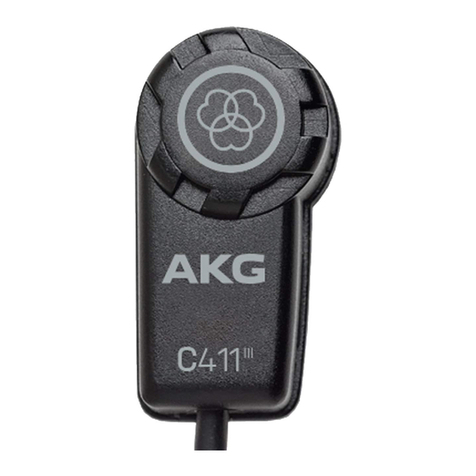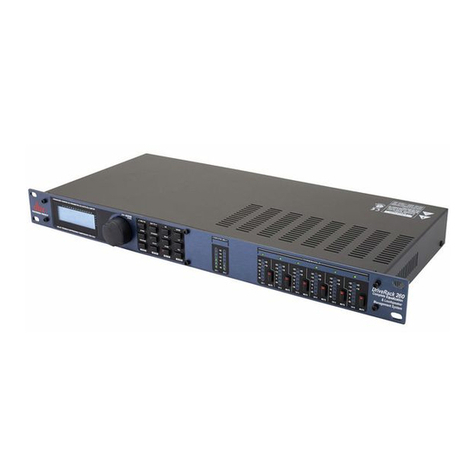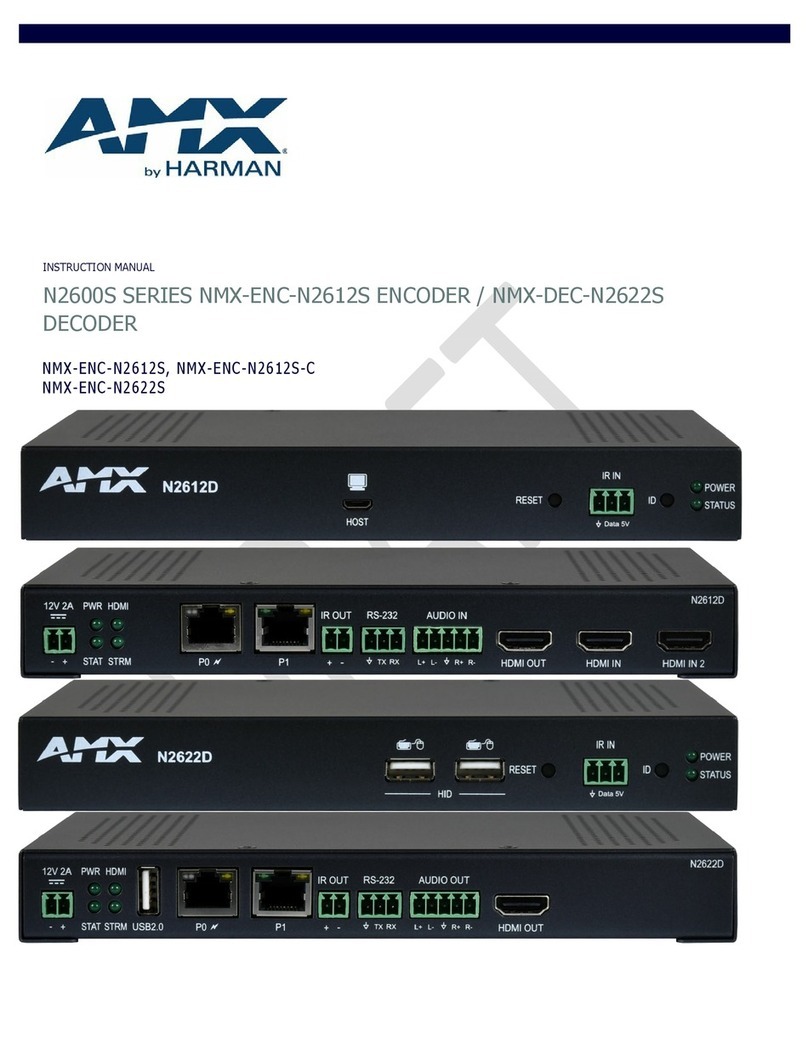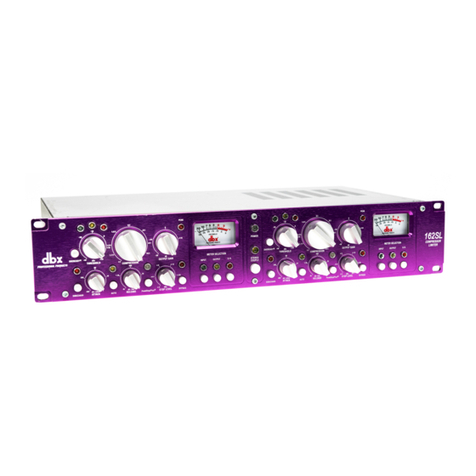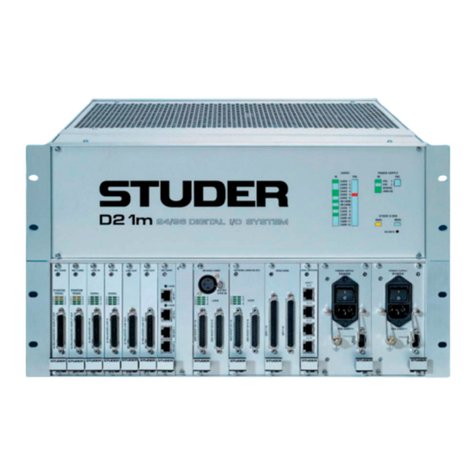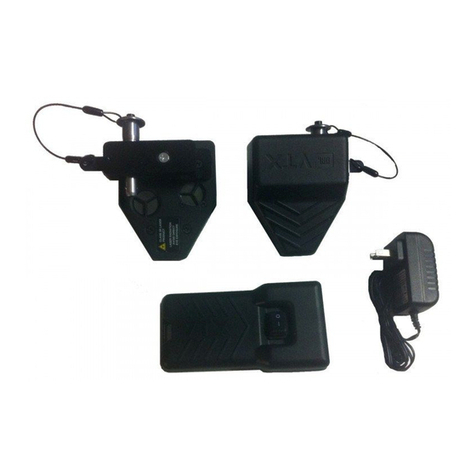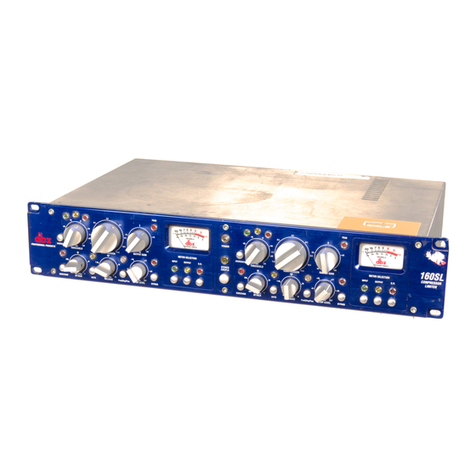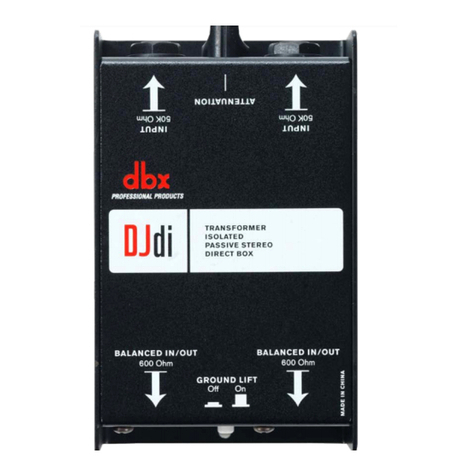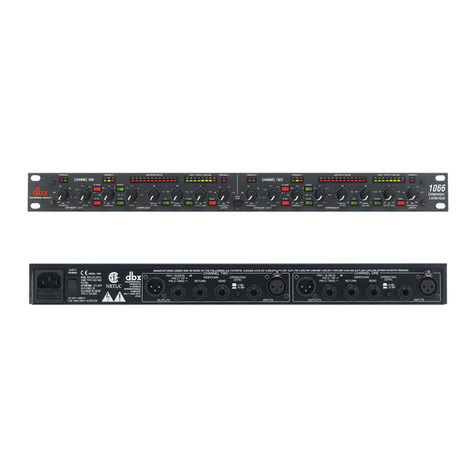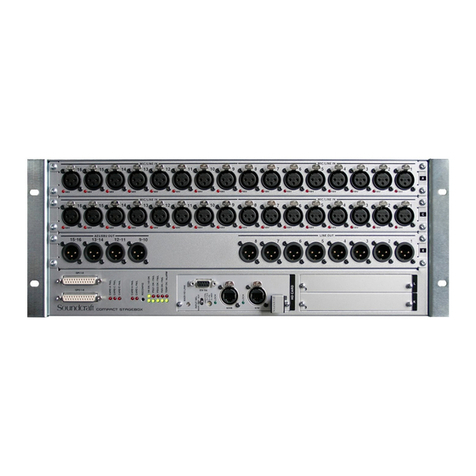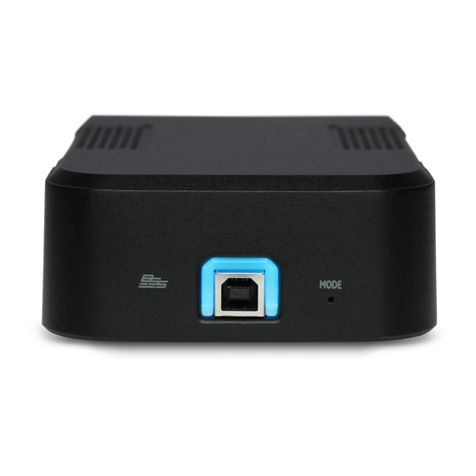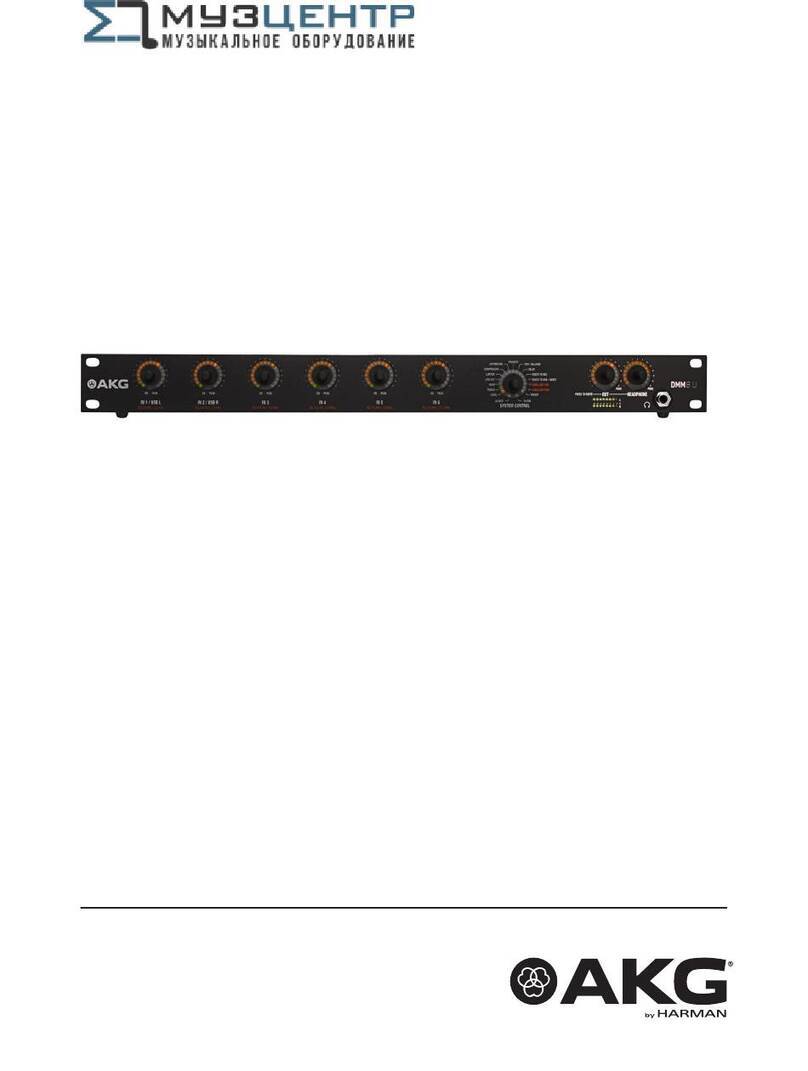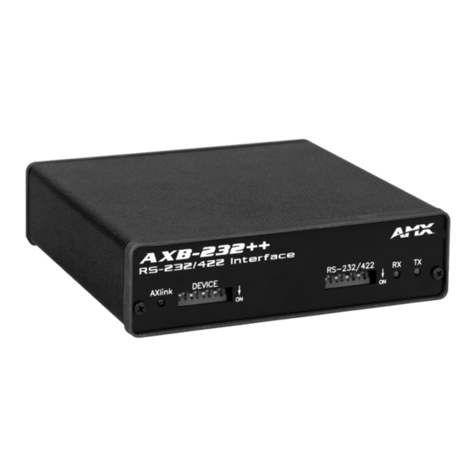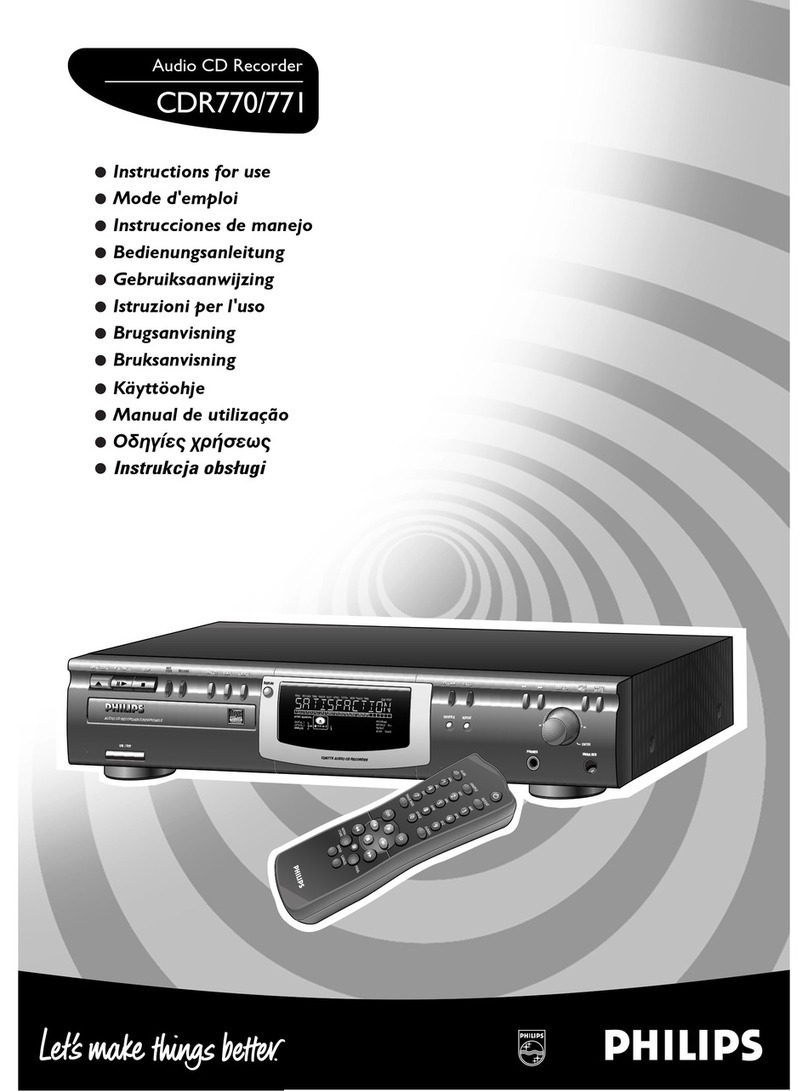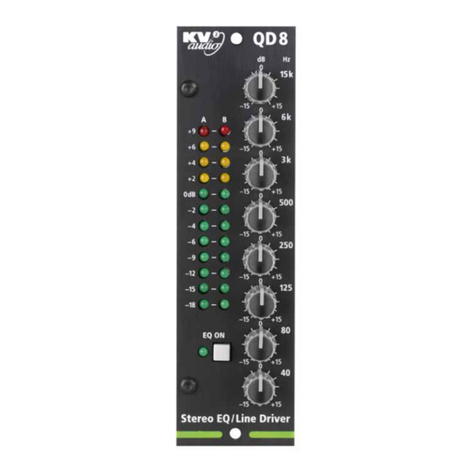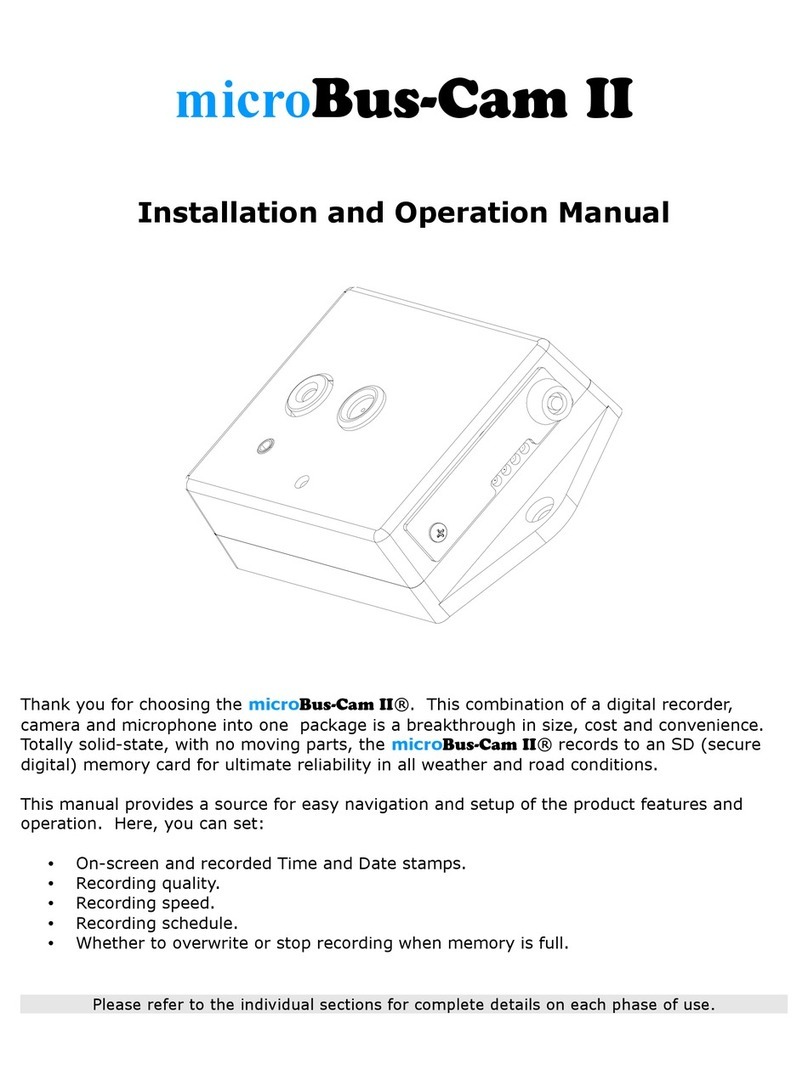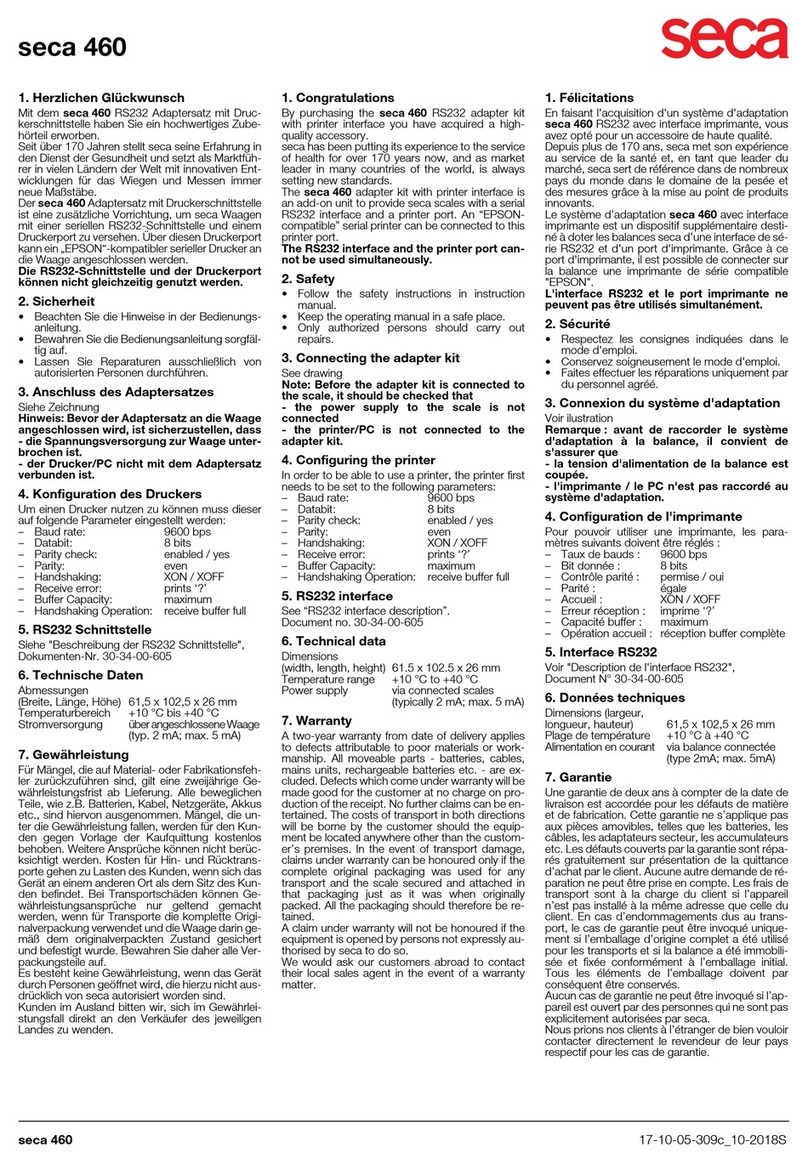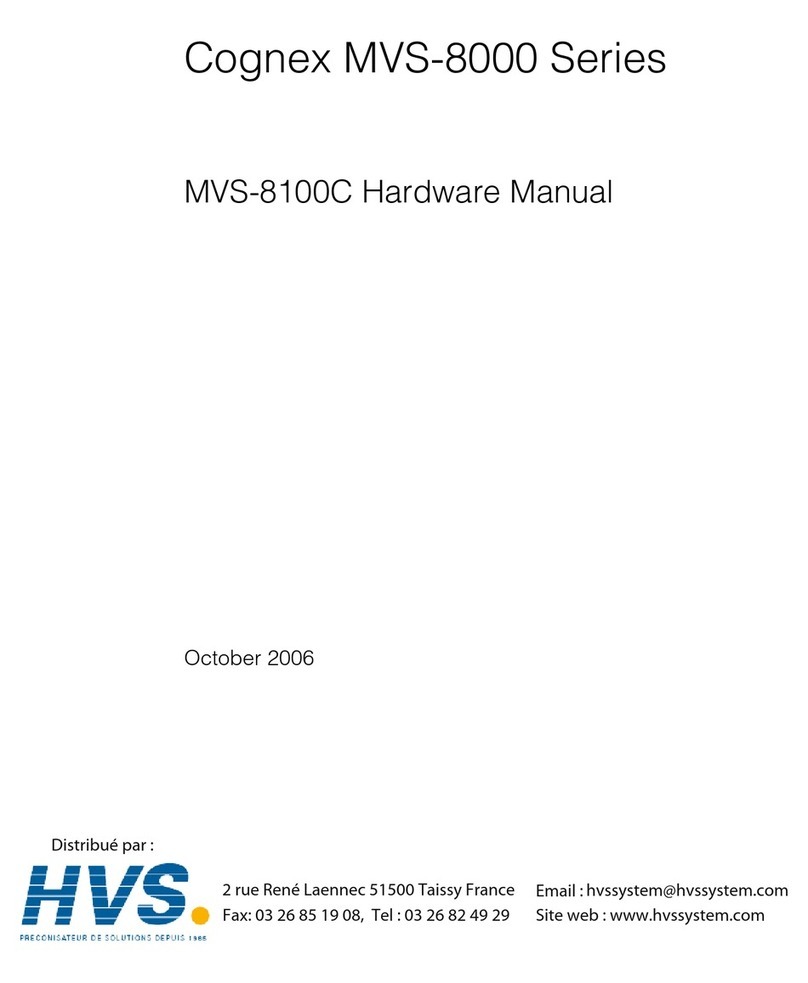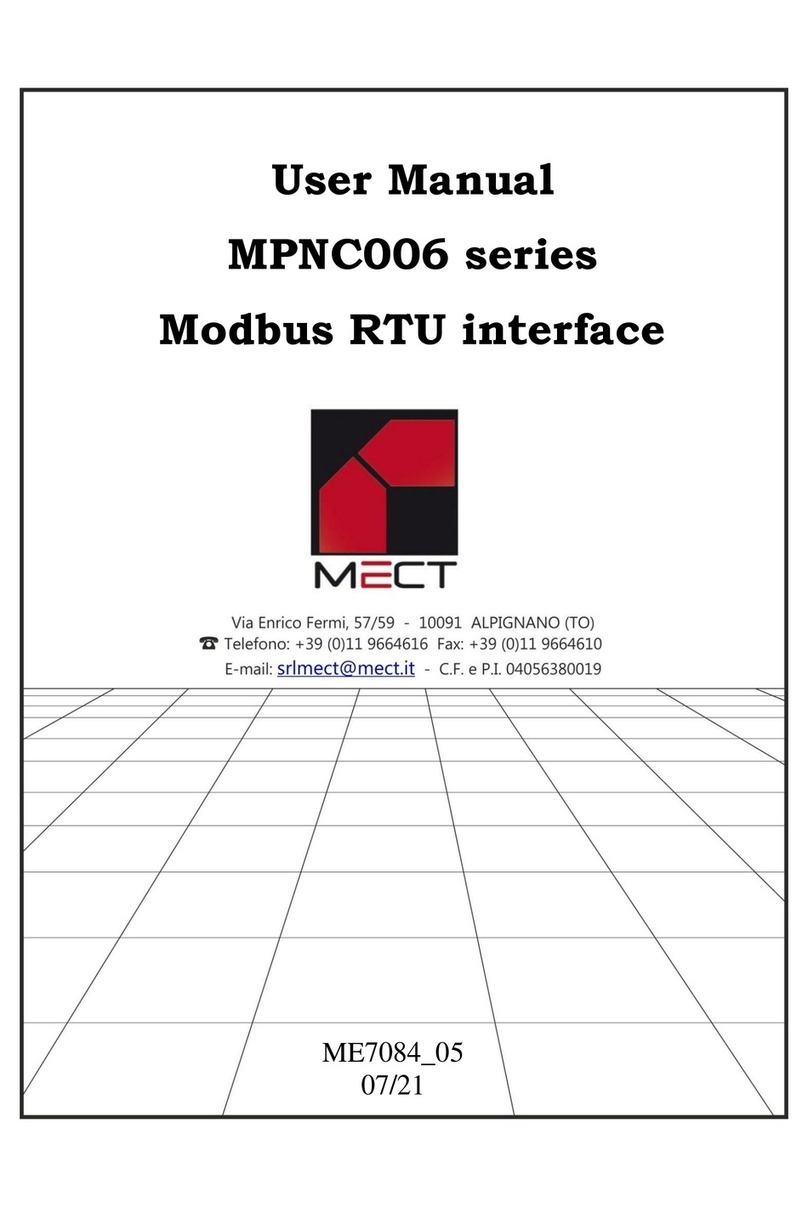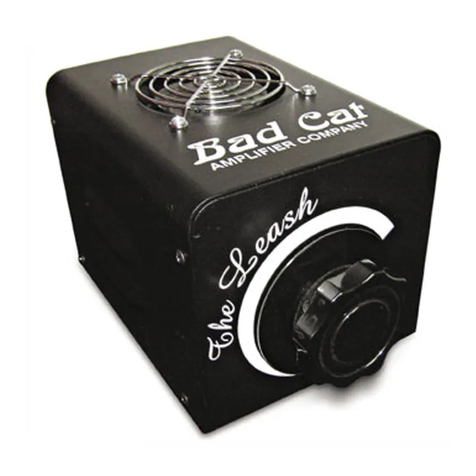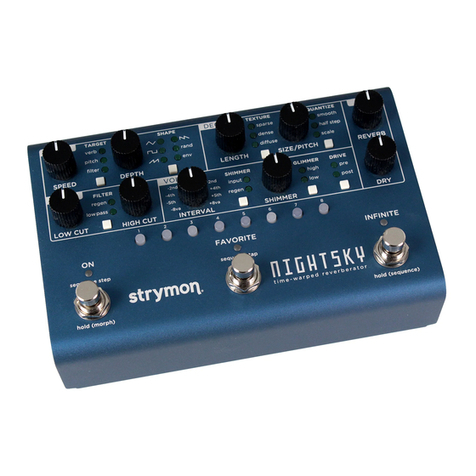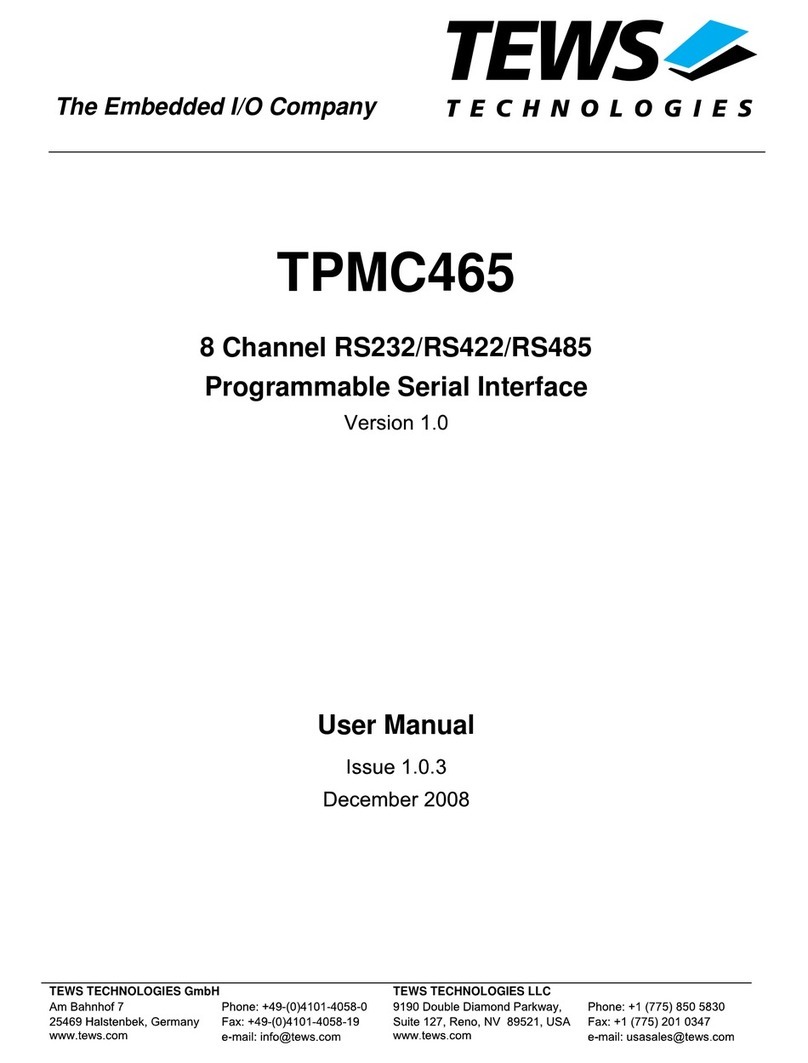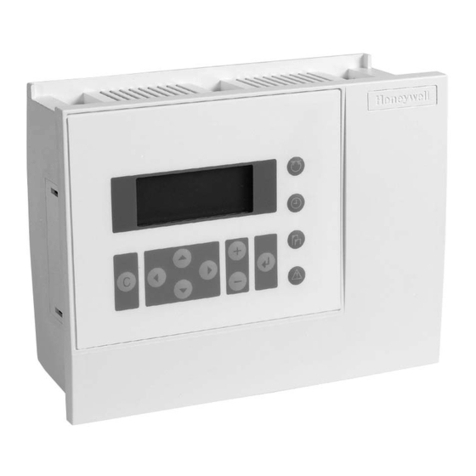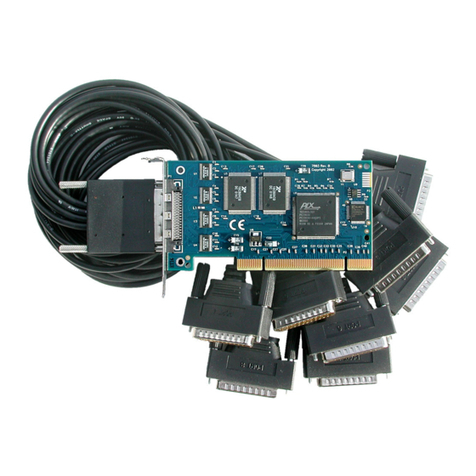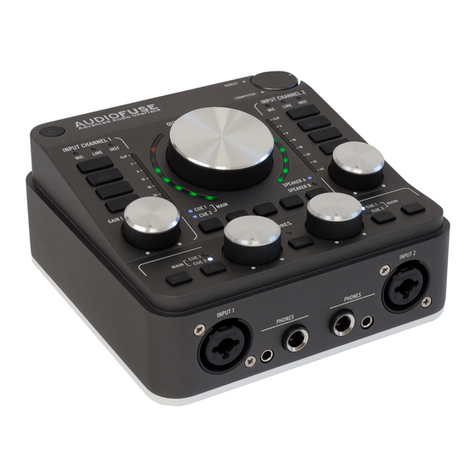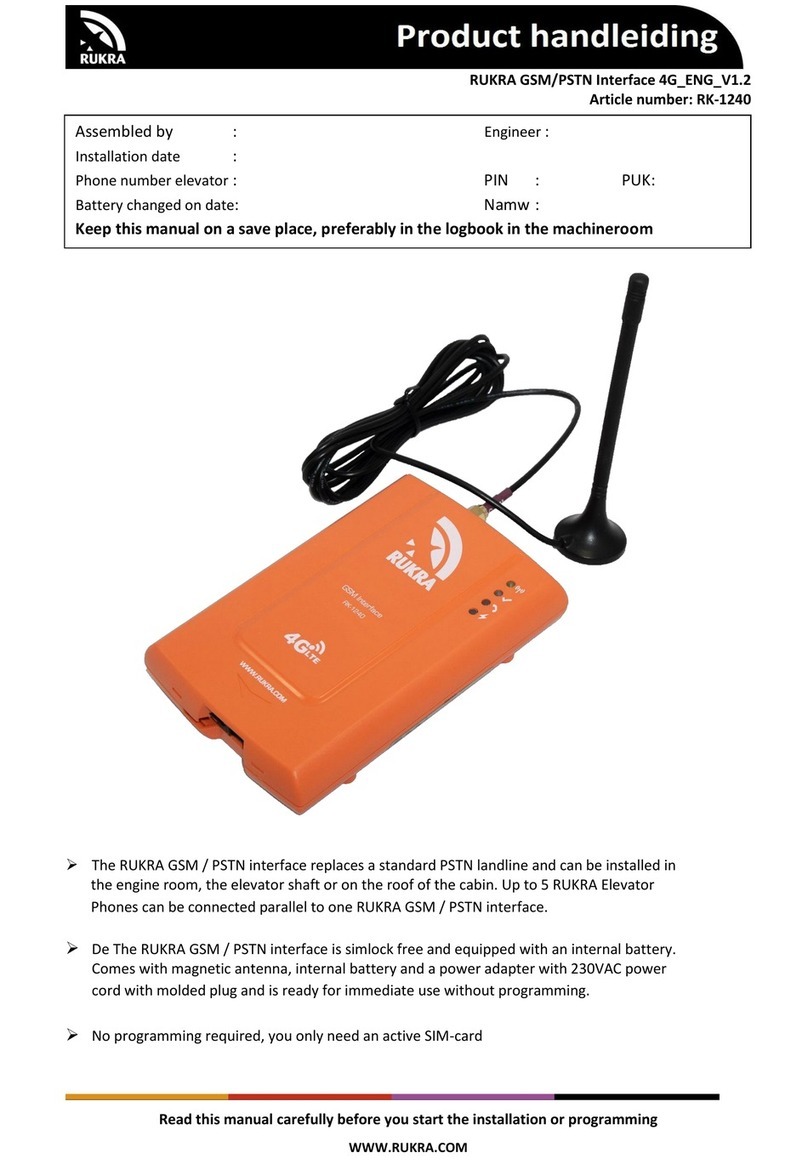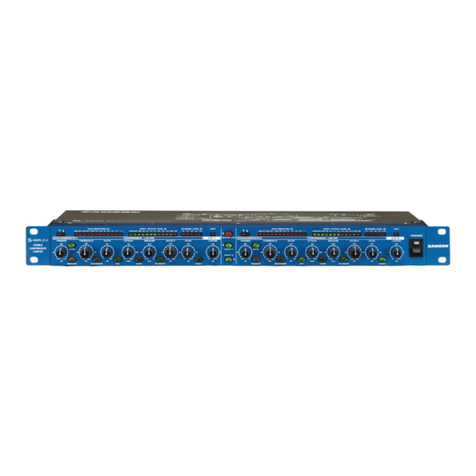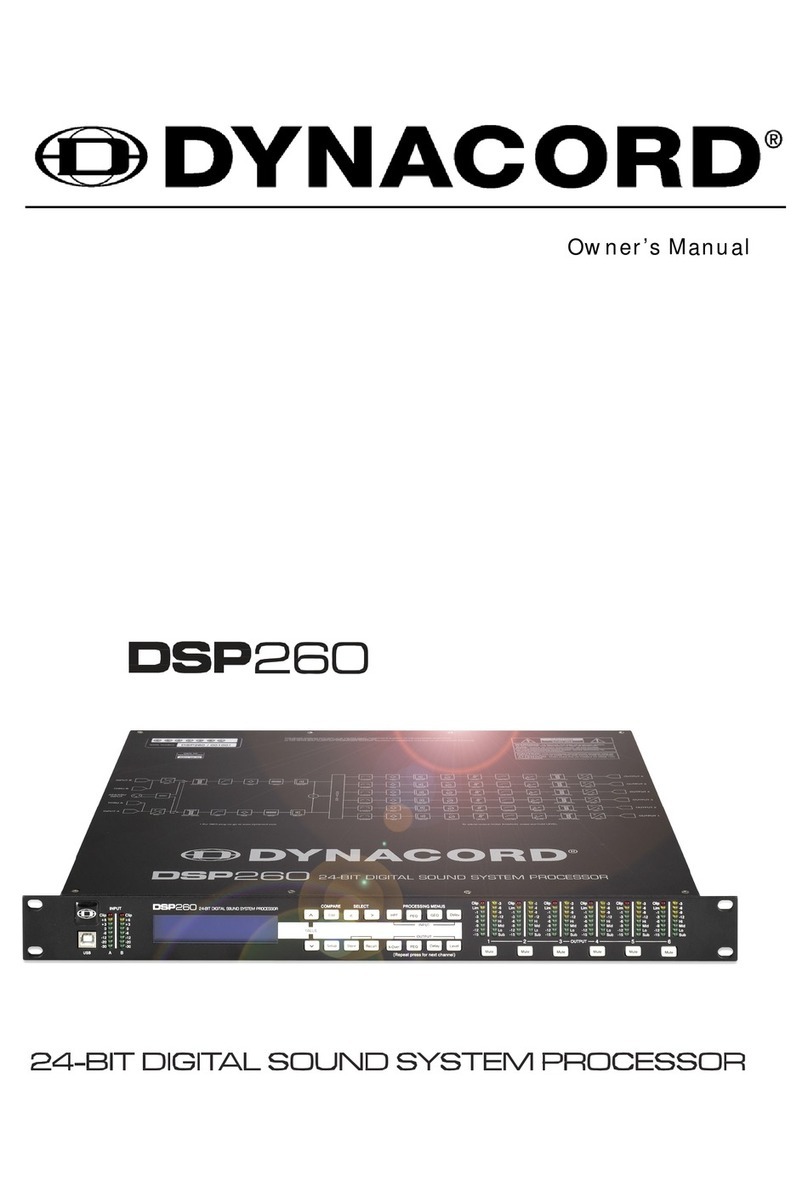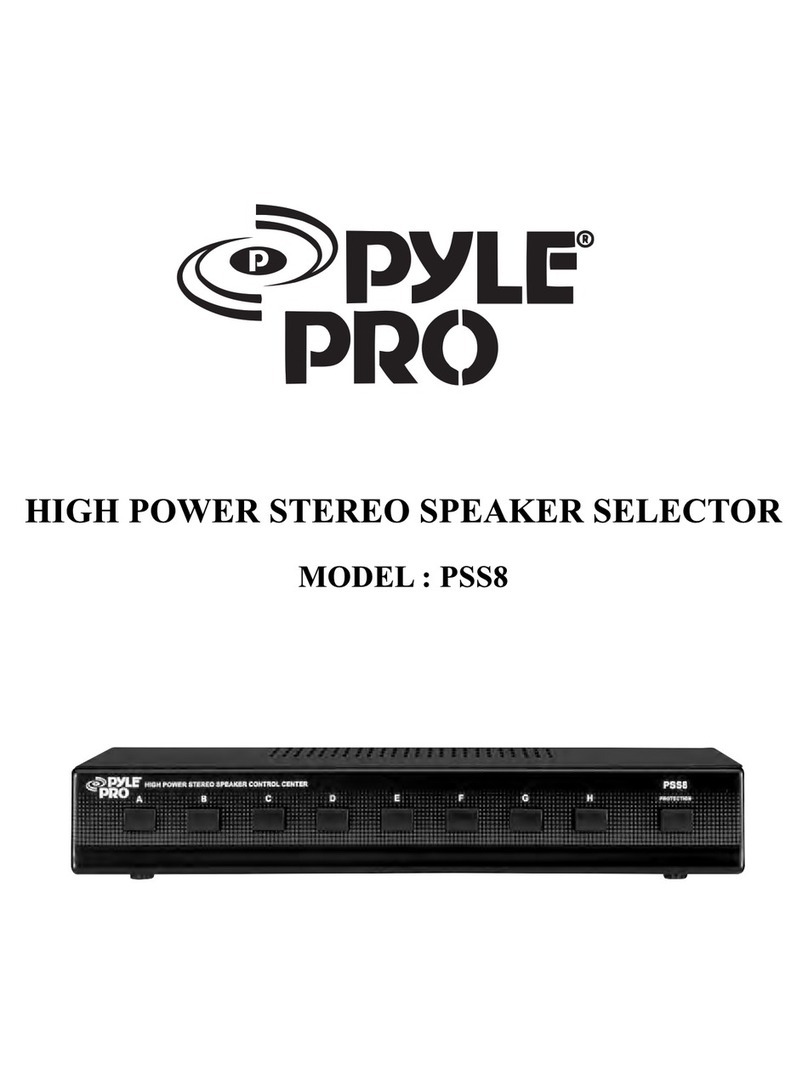
© 2015 Harman. All rights reserved. Netlinx, AMX, AV FOR AN IT WORLD, and HARMAN, and their respective logos are registered trademarks of
HARMAN. Oracle, Java and any other company or brand name referenced may be trademarks/registered trademarks of their respective companies.
AMX does not assume responsibility for errors or omissions. AMX also reserves the right to alter specifications without prior notice at any time.
The AMX Warranty and Return Policy and related documents can be viewed/downloaded at www.amx.com.
3000 RESEARCH DRIVE, RICHARDSON, TX 75082 AMX.com | 800.222.0193 | 469.624.8000 | +1.469.624.7400 | fax 469.624.7153
AMX (UK) LTD, AMX by HARMAN - Unit C, Auster Road, Clifton Moor, York, YO30 4GD United Kingdom • +44 1904-343-100 • www.amx.com/eu/
Last Revised: 10/05/2015
Installation/Safety Instructions
• Connect the unit only to a properly-rated supply circuit.
• DO NOT stand other units directly on top of the TPI-PRO-DVI when it is rack mounted, as
this will place excessive strain on the mounting brackets.
• ALWAYS ensure that the rack enclosure is adequately ventilated.
- Adequate ventilation is critical for proper operation of the TPI-PRO-DVI.
- The TPI-PRO-DVI uses the bottom cover as a heat sink. In most installations it will be necessary
to have some amount of airflow across the bottom cover.
- It is good practice to leave 1 RU of empty space above and below the unit.
- Placing the unit low in the rack, using vented spacer panels and keeping other heat-generating
equipment away from the unit can also be beneficial.
- Depending on the rack enclosure and the surrounding air temperature, it may also be necessary
to incorporate rack fans to increase air flow across the bottom of the unit.
The TPI-PRO-DVI occupies one rack unit in a standard 19" equipment rack. The included
mounting brackets can be rotated 90° in any direction to accommodate several different
mounting options, including tabletop, under/over the table, and vertical wall mounting.
Connections Overview
FIG. 2 illustrates how all of the basic connections on the TPI-PRO-DVI are used in a basic
installation:
Cable Details and Pinouts
Refer to the TPI-PRO-DVI Instruction Manual.
Startup Routine and Initial Panel Response
• Discharge any acquired static electricity by touching a grounded metal object.
• Verify the rear connections are secure and active.
1. Connect the 12VDC Power Supply to the PWR connector on the rear panel. The TPI will
power ON and initialize the startup routine when the power supply is connected.
Note: Once power is applied, use the Power button to toggle the unit off and on.
2. After the startup routine, the connected touch monitor displays one of two possible
screens:
• If the TPI’s output resolution matches that of the touch monitor, continue by setting the
touch drivers associated with the touch monitor.
Note: Refer to the Available Pixel Display and Refresh Rates section in the TPI-PRO-DVI
Instruction Manual for a comprehensive list of Touch Monitors that have been tested with
the TPI-PRO-DVI.
• If the TPI’s output resolution does not match the resolution of the connected touch
monitor, you must set the output resolution of the TPI to match the touch monitor.
Note: An "OUT OF RANGE" message is often generated by the touch monitor. Some monitors will
not display a message, but will appear blank instead.
Setting the Output Resolution
The TPI’s output resolution must match the output pixel resolution and refresh rate set on the
connected touch monitor.
• The default output resolution is 1280 x 1024 @ 60Hz.
• The maximum output resolution is 1920 x 1200 @ 60 Hz.
Note: The TPI-PRO-DVI does not provide Component (YPbPr) or Interlaced outputs.
•UsetheRESOLUTION pushbutton to alter the outgoing resolution to match the output
pixel resolution and refresh rate set on the connected touch monitor.
1. Press the RESOLUTION pushbutton to open the Resolution Setup page.
2. Press RESOLUTION again to cycle through the available output resolution settings.
• Every consecutive button push cycles the output resolution to the next highest setting.
• Double-push the RESOLUTION button to return to the previous setting.
• For a listing of available pixel display and refresh rates, refer to the TPI-PRO-DVI
Instruction Manual.
3. The message "Please wait, loading new resolution..." indicates that the new resolution
setting is being saved. Do not remove power while the new settings are being saved.
4. Once your resolution is selected, you can use the outer screen area lines on the
Resolution Setup page to adjust your monitor’s visible screen area.
• This could involve using the monitor’s video control to stretch and move the incoming
video so that the borders follow the edges of the screen without disappearing.
• There are normally 60 seconds before the resolution times-out, but you can press the
front panel RESOLUTION button again to return to the previous resolution pattern and
continue setting up the monitor.
5. Press and hold the RESOLUTION button to save the resolution setting and exit the
Resolution Setup page.
Note: When the new output resolution is applied, there may be some shifting of the default Main
page, as it was developed for 1280 x 1024.
Setting the Touch Drivers (Serial Touch Monitors Only)
After matching the resolution between the TPI and panel/monitor, the next step is to select the
necessary touch drivers from the driver set provided by the TPI.
• This step only applies to serial touch monitors, as USB monitors are automatically
detected.
• The touch drivers are set when you connect the TPI to a touch monitor.
• The default Touch Input Driver is EloTouch©.
• If you are using a non touch-enabled monitor, select NullTouch.
1. Press the TOUCH pushbutton on the front panel to open the Panel Information page.
2. Press the front panel TOUCH button to cycle through the list of available Touch Input
Drivers.
Note: Go to http://www.amx.com//assets/manuals/TPI-PRO.Supported.Touch.Monitors.zip to
download the most recent List of Touch Monitors and USB Touch Drivers Tested with the
TPI-PRO-DVI (including the most current listing of tested serial touch panel drivers).
Note: The listing of compatible touch monitors is subject to change due to undocumented changes that
3rd-party touch monitor manufacturers make to their products over time. Compatibility at a past date
does not guarantee compatibility in the future, and should be verif ied before deployment.
Verify that the selected Touch Input Driver matches the connected touch monitor.
Calibrating the TPI-PRO-DVI
If the wrong touch driver is selected prior to the calibration process, press any of the front-
panel pushbuttons to exit the calibration process and re-select another touch driver. If you are
using a non touch-enabled monitor, do not press the calibrate button. Refer to the TPI-PRO-DVI
Instruction Manual for screen adjustment procedures.
Calibrating the TPI-PRO-DVI Using a USB Input
1. Connect a USB cable from a touch panel to one of the Type-A USB ports on the front or
back of the TPI.
2. Press the POWER button on the front panel to reboot the TPI and allow the unit to detect
the new hardware.
3. Press the CALIBRATE button on the front panel to open the Calibration page.
4. Press the crosshairs to set the calibration points on the LCD.
5. After the "Calibration Successful." message appears, press anywhere to return to the
Setup page. If the calibration fails, attempt to calibrate again. If unsuccessful, call AMX
Tech Support.
Note: It is recommended that you calibrate the TPI before its initial use, after completing a
firmware download, and after switching Touch Input Drivers (and touch devices.)
6. Press the Protected Setup button (located on the lower-left of the panel page) to open
the Protected Setup page.
7. Enter 1988 in the Password field and press Done when finished.
8. Press the on-screen Reboot button to cycle power to the TPI and incorporate the new
settings. The touch monitor will go blank for a few seconds during the reboot process.
Calibrating the TPI-PRO-DVI Using a Serial Touch Panel
1. Connect a DB9 cable from a touch panel to the DB-9 touch input connector on the back
of the TPI.
2. Press the POWER button on the front panel to reboot the TPI and allow the unit to detect
the new hardware.
3. Press the CALIBRATE button on the front panel. This process opens a calibration page
that uses a series of crosshair coordinate intersections to calibrate the touch panel
(using the newly selected touch driver).
Note: If the wrong touch driver is selected prior to the calibration process, press any front-panel
button to exit the calibration process and re-select another touch driver.
4. Press the crosshairs (on the Calibration page) to set the calibration points on the LCD.
5. After the "Calibration Successful." message appears, press anywhere to return to the
Setup page. If the calibration fails, return to the Protected Setup page and select
another touch input driver.
6. Press the Protected Setup button (located on the lower-left of the panel page) to open
the Protected Setup page.
7. Enter 1988 into the Keypad’s password field and press Done when finished.
8. Press the on-screen Reboot button to cycle power to the TPI and incorporate the new
settings. The touch monitor goes blank for a few seconds during the reboot process. You
can also use a mouse to press the on-screen Reboot button.
9. Upon start-up, press anywhere on the screen to return to the Protected Setup page and
begin defining the communication properties (refer to the TPI-PRO-DVI Instruction
Manual for information).
Additional Documentation
For detailed cabling, installation, configuration, programming, and operating instructions,
refer to the TPI-PRO-DVI Instruction Manual available on-line at www.amx.com.
FIG. 2 TPI-PRO-DVI - BASIC WIRING CONNECTIONS
USB Device Port 4 - to PC #4 (provides pass-through control of PC #4)
USB Device Port 3 - to PC #3 (provides pass-through control of PC #3)
USB Device Port 2 - to PC #2 (provides pass-through control of PC #2)
USB Device Port 1 - to PC #1 (provides pass-through control of PC #1)
USB Touch Input connectors (2)
connect to up to two USB (Type A) touch devices (i.e. Mouse/Keyboard/Touch Screen)
Note: 2 additional USB Touch Input connectors are provided on the front panel, for ease-of-access.
Each of the USB Device ports (1-4) connect to the PC that is providing
video to INPUTs 1-4, in a direct 1-to-1 correlation:
USB Device Port #1 connects to the PC that is providing video to INPUT 1,
USB Device Port #2 connects to the PC that is providing video to INPUT 2, etc.
These Device Ports provide USB Mouse/Keyboard/Touch Screen pass-through
control of the PCs displaying on INPUTS 1-4.
INPUT 4 - Video input from PC #4
INPUT 3 - Video input from PC #3
INPUT 2 - Video input from PC #2
INPUT 1 - Video input from PC #1
TOUCH INPUT DB-9 connector
allows you to connect one Serial-controlled touch device (i.e. RS232 Touch Screen)
OUTPUT 2 - video output to display device #2
OUTPUT 1 - video output to display device #1
Only one touch monitor at a time can be connected.



